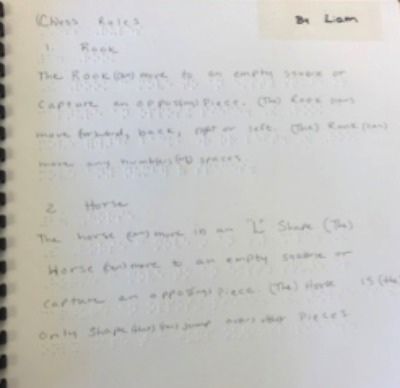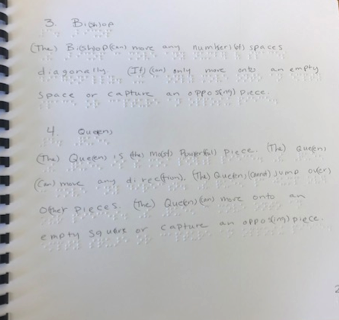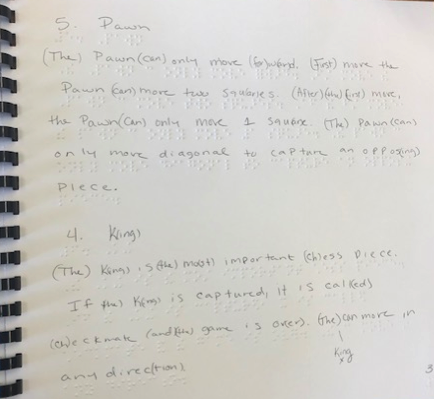Making Chess Accessible To My Son Who Is Deafblind
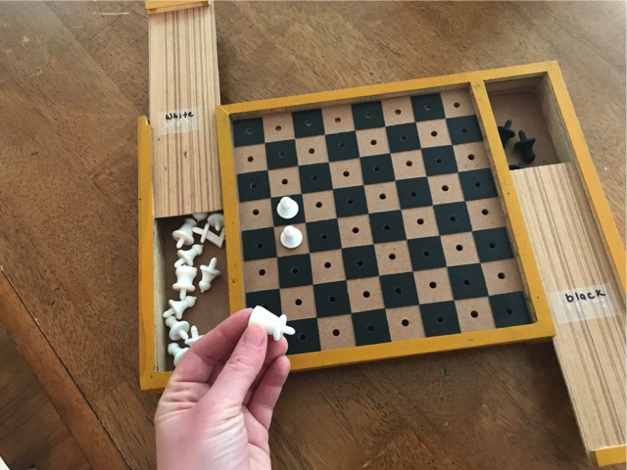
My son Liam (third grade, deafblind) is learning how to play the game chess. He currently knows the name of the pieces and has labeled his "accessible" chess board already. We worked together on writing the rules for each of the pieces while we learned the game together. He completed one "rule" or one "piece" each day. Liam would write each set of rules either on his brailler or his Focus 14 (refreshable braille screen). We were learning about the game of chess while working on writing complete sentences; making sure we used capitals at the beginning of the sentence and correct punctuation at the end of the sentences. It took about a week to complete the project. I compiled his writing and printed his work off on a braille embosser.
This was a motivating topic for him to use while working on writing complete sentences.
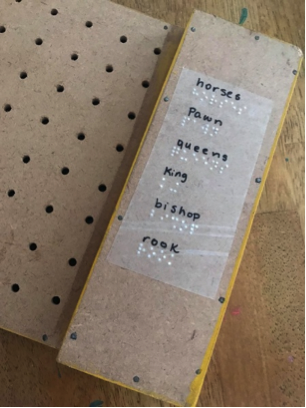
Chess Rules by Liam
The Rook can move to an empty square or capture an opposing piece. The Rook can move forward, back, right, or left. The Rook can move any number of spaces.
-
Horse
The horse can move in an L shape. The horse can move to an empty space or capture an opposing piece. The horse is the only shape that can jump over other pieces.
-
Bishop
The Bishop can move any number of spaces diagonally. It can only move into an empty space or capture an opposing piece.
-
Queens
The queen is the most powerful piece. The queens can move any direction. The queen cannot jump over other pieces. The queen can more onto an empty space or capture an opposing piece.
-
Pawn
The Pawn can only move forward. First move the Pawn can move two squares. After that first move, the Pawn can only move 1 square. The pawn can only move diagonal to capture an opposing piece.
-
King
- Accessible chess board with pieces (available through Maxi Aids, Amazon, and other sources)
- Brailler and paper
- Focus 14 (refreshable braille screen and iPad)
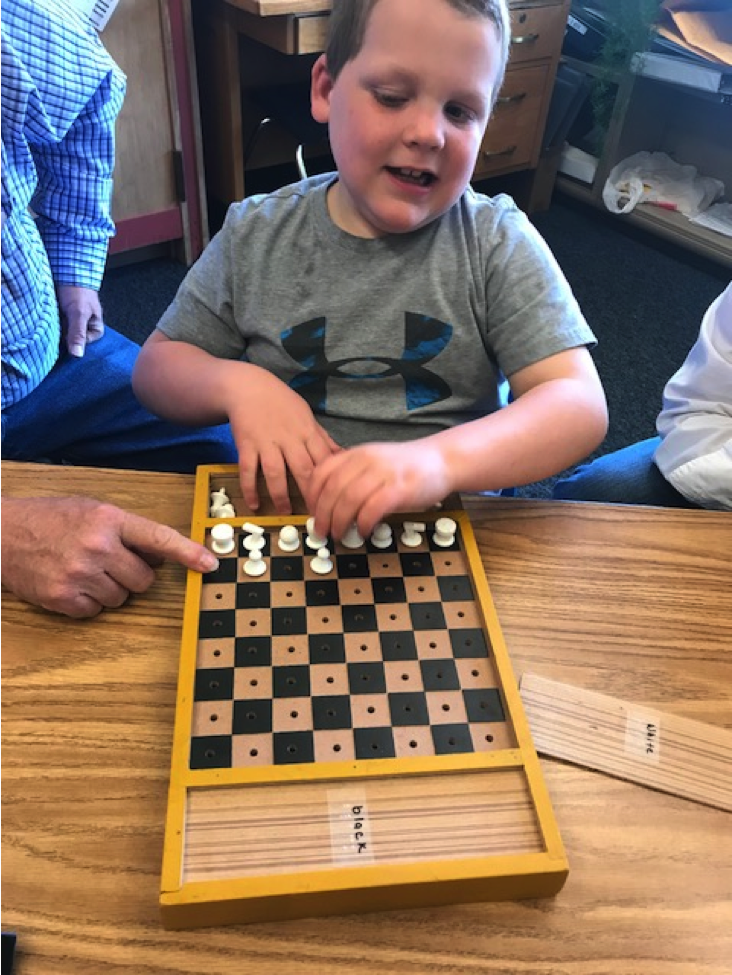
- Review the names of the game pieces and spell each one.
- Review how the pieces are placed on the board initially and set the game up together.
- Load the brailler and begin discussing the rules of the "piece of the day".
- Ask the child to write the first three sentences by himself. The adult can model the final sentence and the child can then read what has been written.
- After writing the 4 sentences about the rules of the "piece of the day", practice the actual rules on the chess board.
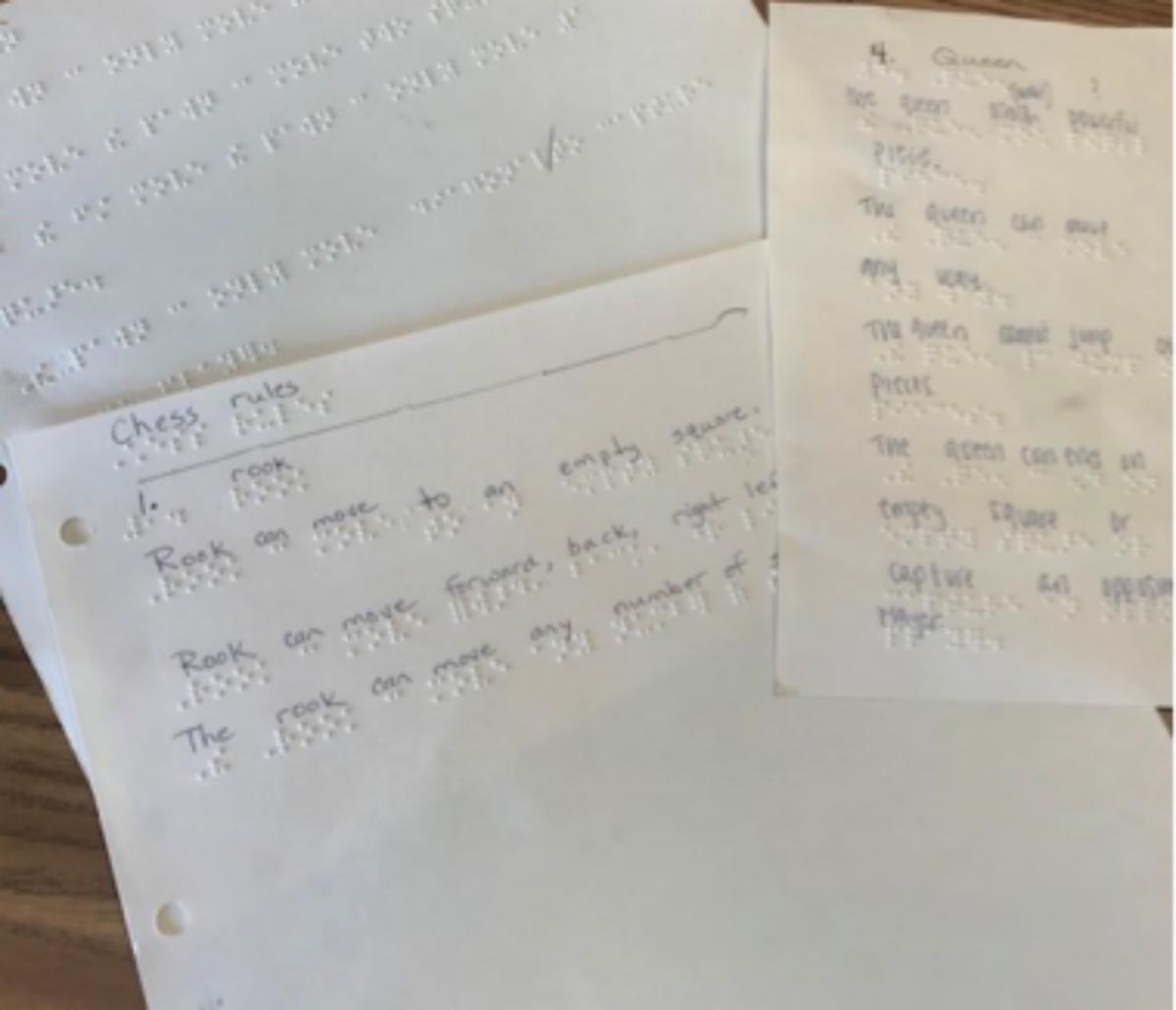
Quick Check:
- Ask questions about what the child wrote.
- Use his writing as a tool for an assessment on his grammar usage and spelling errors to use for future lessons and support.


